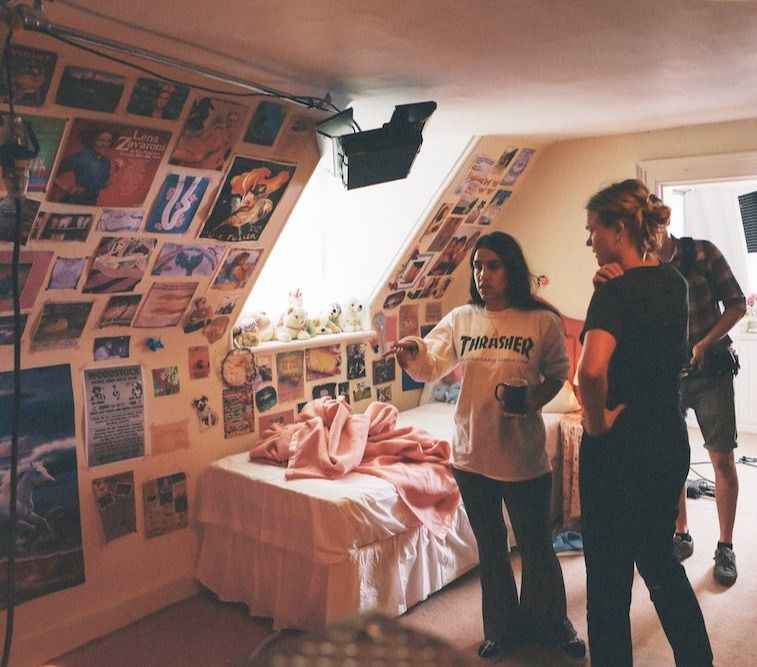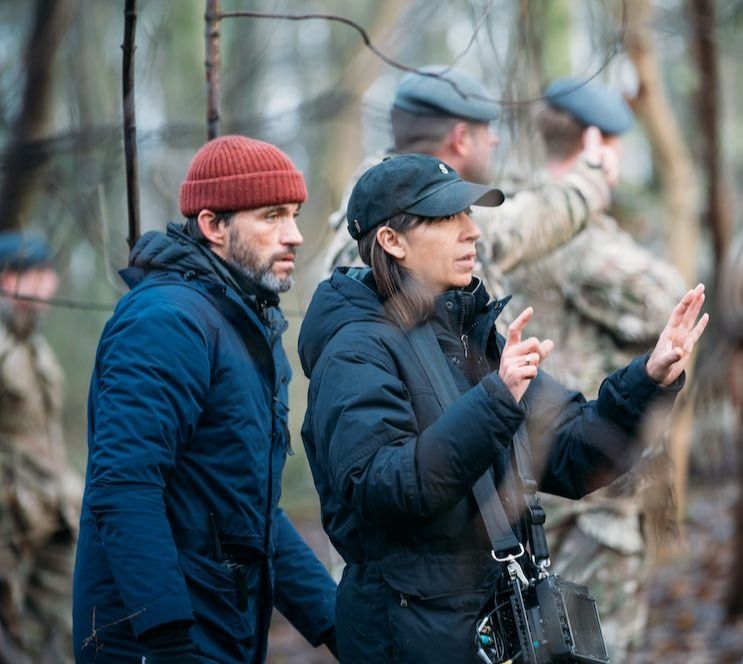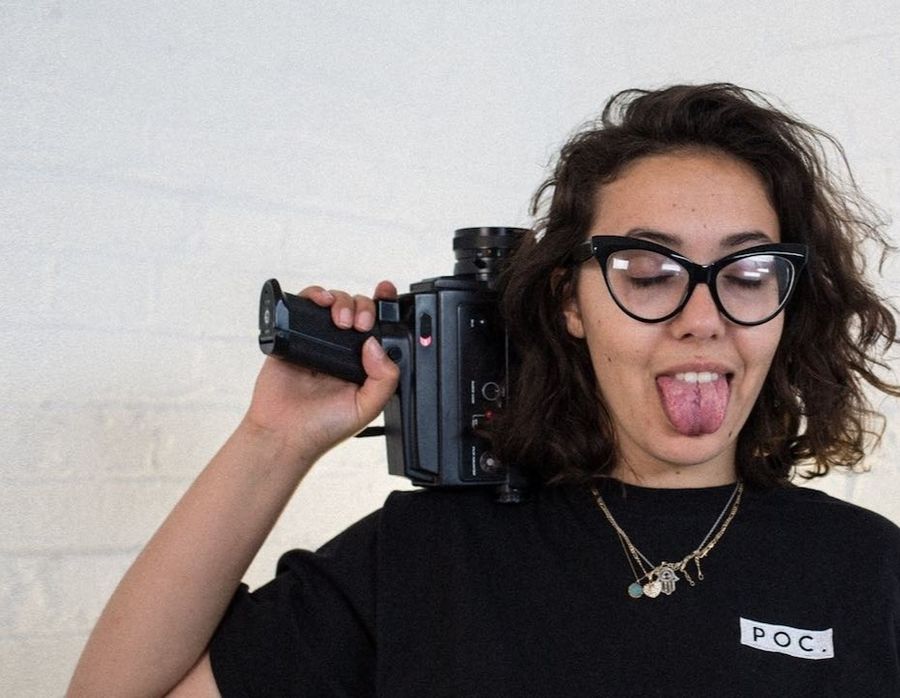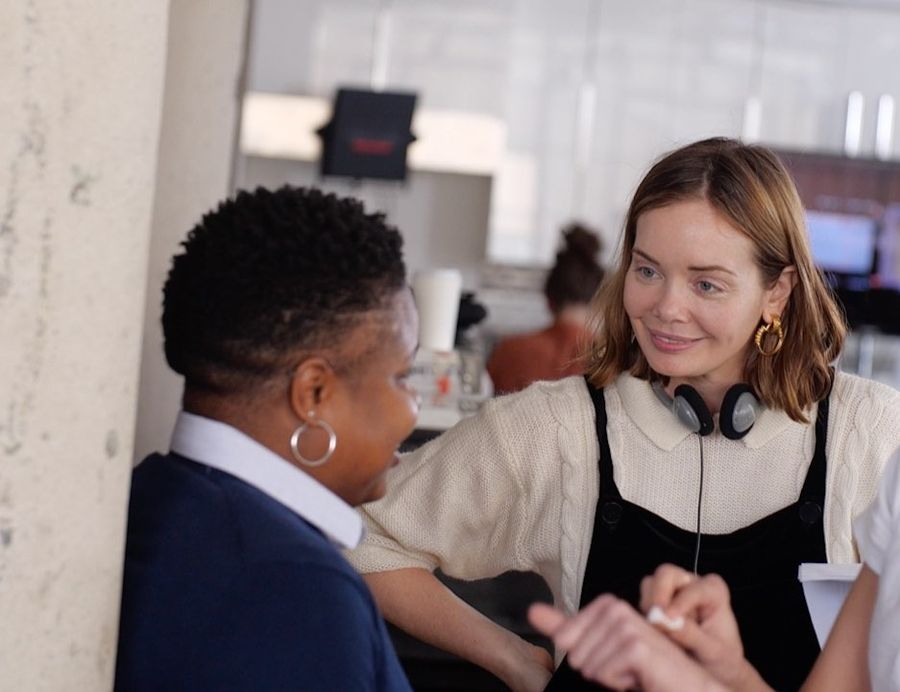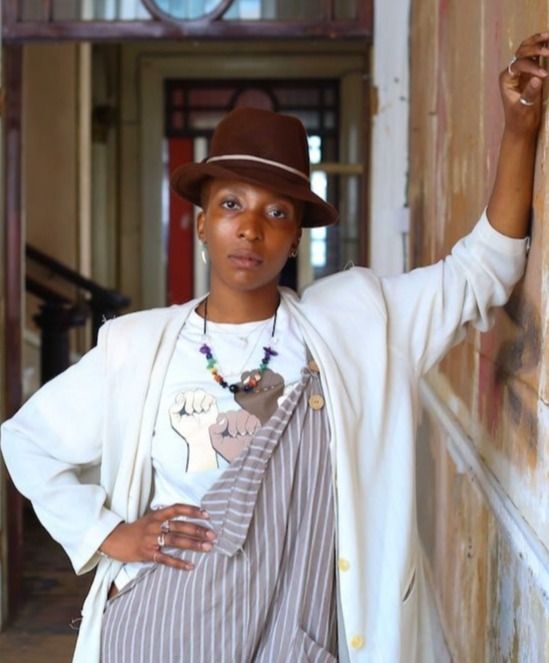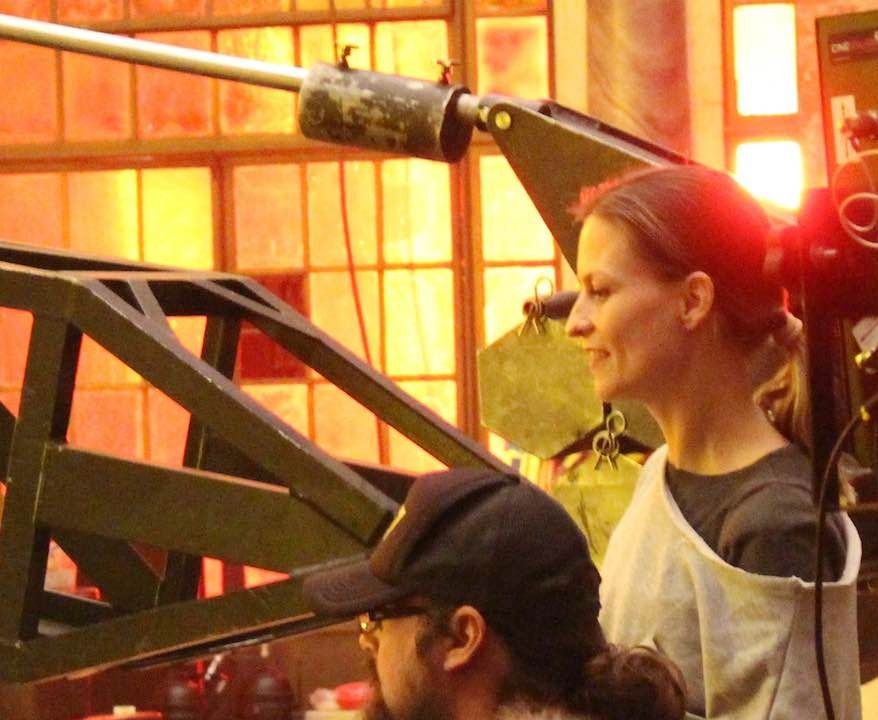Camille, the newly 16 year old protagonist of director Katharina Hingst‘s short film, “Bloody Hell,” is becoming a grown woman, but not without a fight.
She smashes a perfectly pink shade of lipstick into her mirror, uses the candles on her birthday cake to light a cigarette, and buries her fingers suggestively into a grapefruit. The source of Camille’s anxiety (and rollercoaster of emotions)? Her long-awaited first period, conjured with the help of a makeshift tampon-and-underwear sacrificial altar.
Katharina’s film captures the hormonal tumult of Camille’s first experience of PMS through a hazy, dreamlike lens, finding aesthetic queues to plumb the depths of one teen girl’s psychological state. “Bloody Hell” re-contexualizes a subject which has remained taboo on-screen, and allows for a full, nuanced portrayal of this relatable adolescent struggle.
We spoke with Katharina about her road to filmmaking (including her opportunity to work with Wes Anderson), the impact of social media on the teenage experience in 2018, and how remembering coffee orders on set could, one day, lead to film funding for aspiring directors.
What is your background—did you study film? Where?
Katharina Hingst: When I was 21, I applied to DFFB, a Berlin-based public film school. I had put a lot of work into my application, and in addition to practical tests, I had done a full on soul striptease trying to present who I was as a person. I even got as far as the final round, until they told me that my work was great, but I was too young to be a director and should re-apply the following year. Well, patience isn’t one of my strong suits, so I decided that film school wasn’t for me. This wasn’t so much a rational decision but hurt feelings—nonetheless, I was young AND stubborn and I was going to find my door, even if I had to kick it in.
Luckily I didn’t have to get violent, and started interning at a local production company in Berlin. I became a specialist in ordering office supplies and answering phone calls. When I finally got to assist on my first shoot, I thought I had found my purpose in life. Production was great and I learned a lot, especially that I didn’t want to work in production—I wanted to MAKE the film, I wanted to run around and scream “ROLLING” and “CUT” and not waste a single day answering calls anymore when I had my calling to answer to.

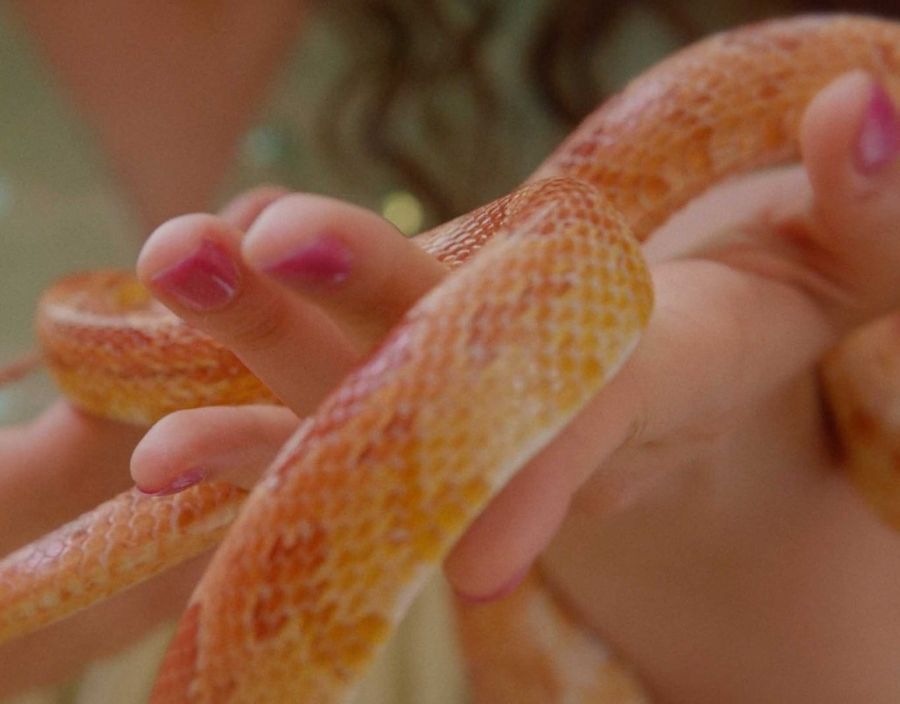
I yet again got lucky, as I was working on Wes Anderson’s “The Grand Budapest Hotel” and pretty much forced the 1st assistant director, who had just arrived from London, to take me on as his runner. This was my “kick in the door” moment and he didn’t have a way out, so he let me join his AD team and I officially became part of the on set crew. After shouting all kinds of things and juggling coffees and hot water bottles through icy east Germany for nearly 3 months, we had wrapped my first feature film. I was hooked.
I got the chance to move to London and continue working with the same AD team, gaining valuable on-set experience on major motion pictures. During this time, I tried to learn as much as possible from some of the best people in the industry. I would get insights into each department, having to look after the entire cast and crew, that no film student would ever get. After years on set, I had yet to learn more about the bigger picture of film making. The chance to do so came with my job as the director’s assistant on a major motion picture. During this role, I was heavily involved in the pre and post production process and gained experience through all stages of filmmaking while working alongside top industry professionals and executives.

Which filmmakers did you look up to growing up?
The first time I actually wanted to know more about a director after watching a film was when I saw “The Virgin Suicides." I must have been around 14 when I fell into Sofia Coppola’s mesmerizing world of filmmaking and storytelling. I couldn’t put a finger on it then, but something had happened to me while watching the five teenage Lisbon sisters struggle through adolescence. I could relate! It was a feeling that stuck with me long after the film had finished. It was as if their story had become part of mine or the other way around. I felt like somewhere in the world was someone who felt what I was feeling, which made me feel so much more normal. Sofia Coppola became my first inspiration, in terms of creating visual narrative that can be experienced through film and has the power to change someone’s perception of reality.
What were some memorable experiences of turning 16 for you?
I remember my 16th birthday, and it sucked. I was in a horrible mood and had expected the world to devote all its attention to me. But all I got was into an argument with my mom (probably over something stupid) and a meltdown that could have been categorized as a major environmental disaster. I basically cried all day and felt nothing but sorry for myself.
This was just a pretty standard explosion of the volcano called puberty, though. I remember feeling lost and struggling a lot to feel comfortable in my own skin. I mostly hung out with boys and tried my best to become one myself. I just had no idea how to get in touch with my feminine side, or what that even meant. I looked down on girly girls and would only wear sneakers, baggy trousers, and shirts with underground rap acts on them. It just felt like a massive inconvenience being stuck in a girl’s body while having interpreted the world from a male perspective all this time. I spent so much effort fighting my femininity as a teenage girl, thinking it was weak and superficial, that I completely missed the chance to define who I wanted to be as a woman.
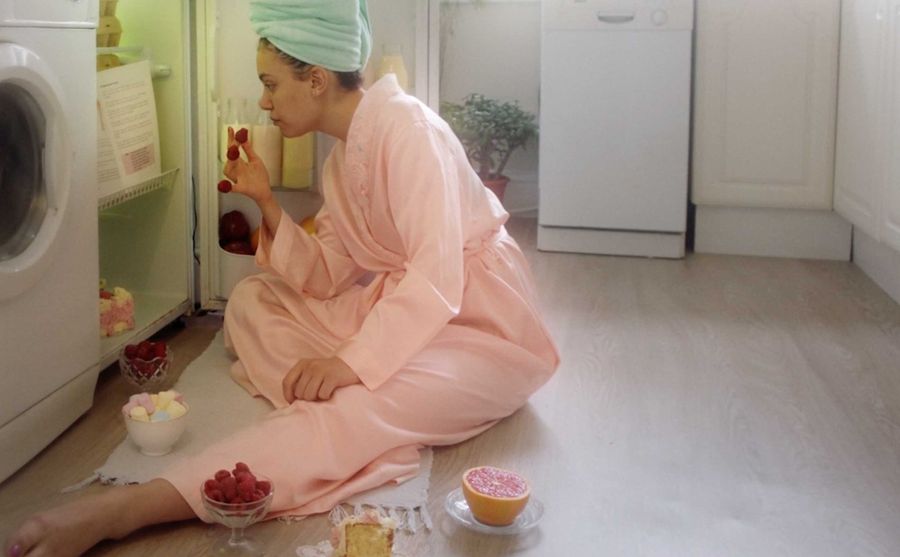
In what ways do you think being 16 has changed?
Being 16 probably hasn’t changed as much as the media would like us to believe. The internal struggle of trying to figure out who you are while society is trying to tell you who you should be is probably as confusing as it was then.
What has changed, though, is the battlefield. While I was lucky enough to fight my insecurities mostly with myself by myself within the walls of my bedroom, the war zone has expanded to the world wide web, and it feels like teens are now facing a whole other level of boss enemy—social media. You not only have to deal with your own anxieties that come with the joy of growing up, you now present them on a silver platter for the world to comment on, like, share, or sad emoji face your dilemma.
I’m not sure if I would have survived being a teenager in the age of Instagram, Facebook, and Snapchat. I think it’s now more important than ever to teach kids the difference between picture perfect virtual reality and unfiltered real life, where it is ok to not always smile and duck face pose with your low carb moccachino and have less followers but real friends instead.
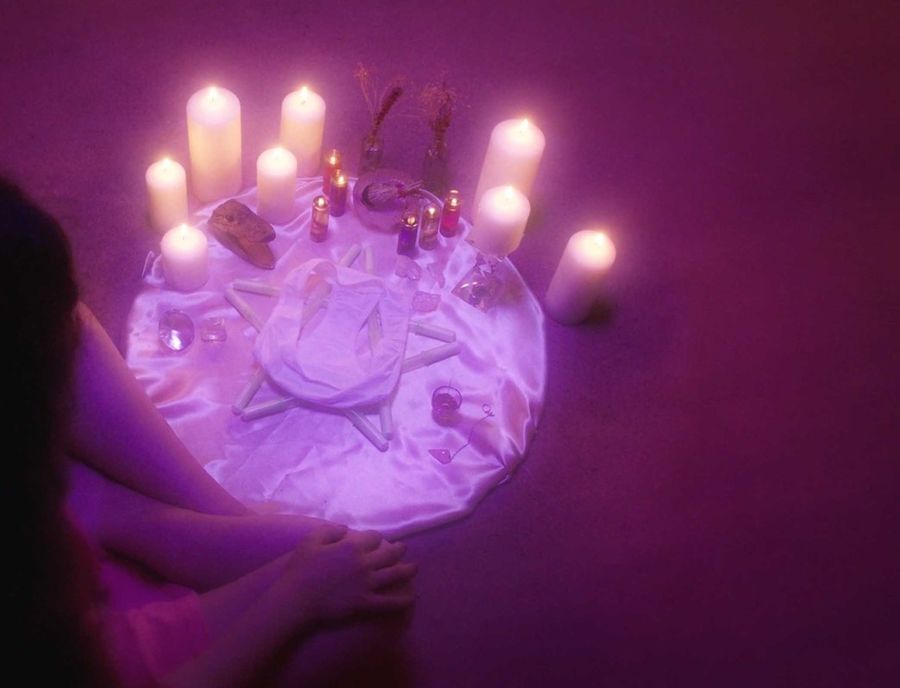
The film is rich with iconography: what made you select these over say, more traditional symbols?
To me, being a woman has always had a deeply spiritual and mystical meaning. It’s like Mother Nature has put her spell on us and we have mastered the art of disguise. We are never just one or the other. It was important to me to make this film as relatable as possible no matter what background the viewer has. I wanted to create a world that was believable and yet an illusion. I wanted the girl to be somewhat of a hybrid—Lara Levy, who played the part in the film, has made this vision come to life with subtle beauty, in order to encourage girls not to be ashamed or feel abnormal but to embrace their femininity with all the challenges it may bring.
I feel like there are so many layers to femininity, so much more beneath the surface and a deeper meaning to almost everything we do and represent. The symbols I chose are exactly that: a metaphor for the unknown beneath the obvious that can be interpreted in different ways, depending on the eye of the beholder. There’s not just one truth, but many. It’s an invitation to let go of what you think you know and let your mind wander.
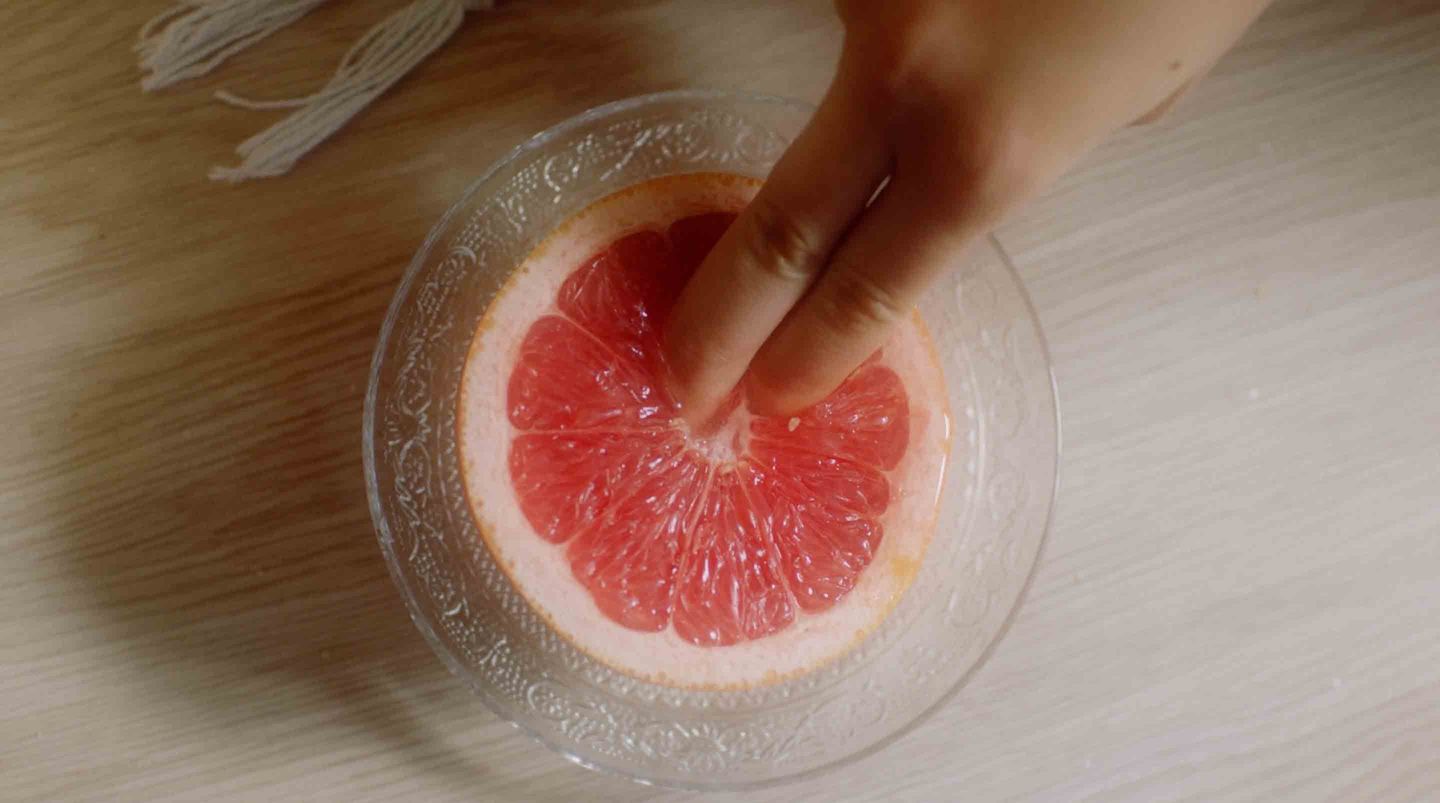
Why did you settle on the soft, rich aesthetic of the film?
I wanted to portray this emotional rollercoaster in a dreamy and slightly abstract way, to make periods less of a “gross” taboo topic. The soft, washed out colors stand in contrast to the harsh emotional struggle she is going through internally. The colors change as the protagonist transitions throughout her journey in the film—thanks to the brilliant work of my DOP, Amelia Hazlerigg and our colourist, Faith Millin, we have made this visual concept come to life. We have separated her world (bedroom, bathroom) from the grown up world (living room, kitchen) by changing color and lighting moods. While she merges into her own world with warm and pinkish colors, she doesn’t feel as belonging in the rest of the house yet.
I wanted the look to be timeless in a way that leaves room for imagination and individual interpretation. As with the symbolism in the film, I wanted to create a visual world that would represent the ambivalence between beauty and pain, as well as the process of shedding your skin in order to grow and enter womanhood.
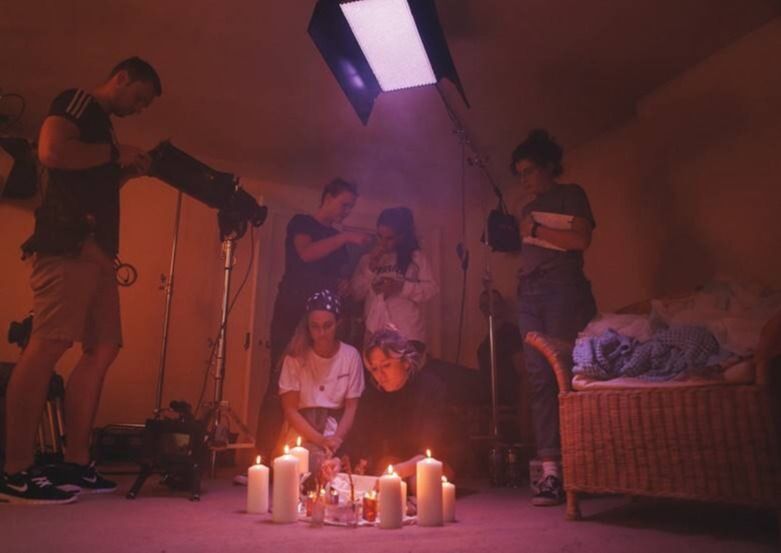
What role has social media played in getting the film made?
Without social media, this project would have never been possible. The entire film was paid for by crowdfunding that we pushed and promoted through social media. When I first sat down with my producer, Minni Podewils, my DOP, Amelia Hazlerigg, and my editor, Carolina Aguirre, we started to brainstorm how to raise the money in a short amount of time, as we were all at the verge of some major life changes and wanted to make this film together before we dispersed in different directions. Crowdfunding was the only way to go without selling our souls (or bodies).
We quickly put together a heartfelt appeal and launched the 21 day Kickstarter campaign with the aim to raise 5K. We flooded our Social Media channels asking people to donate and were met with so much support that we were able to raise the entire budget in only three days with nearly 100 backers. We were overwhelmed, and I got a little scared, as this was our first short film and the project had gotten so much attention already that there was no turning back now. It was pretty much what I needed to give it the final push to bring this film to life.
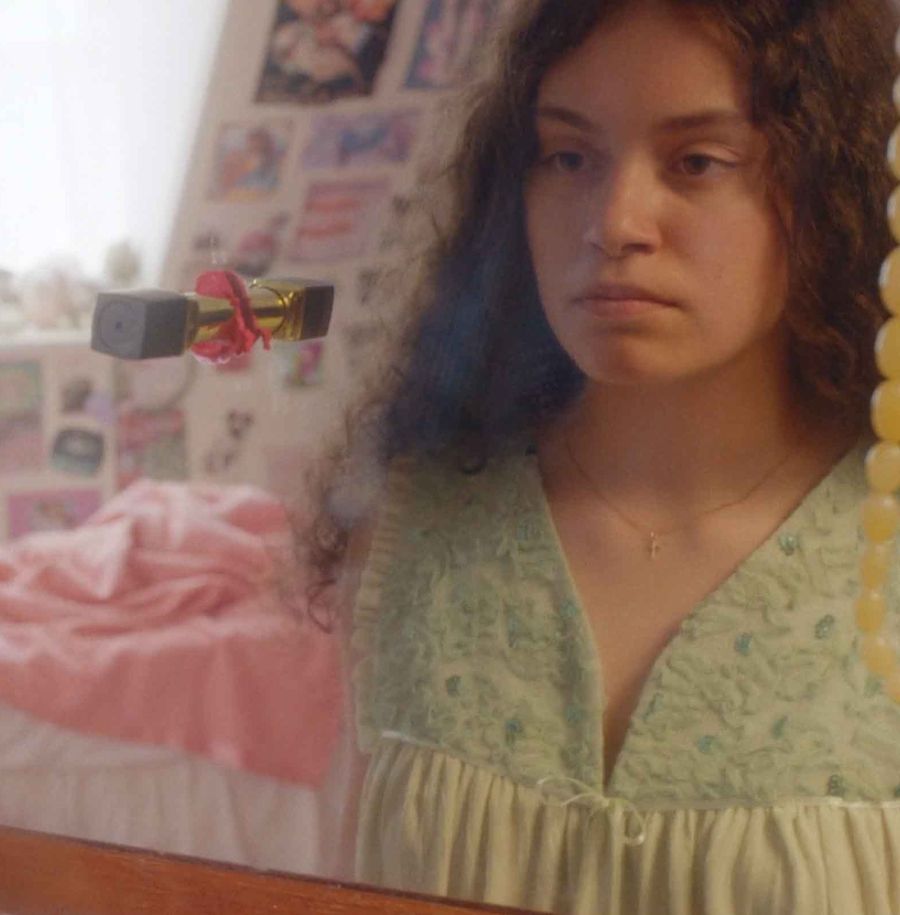
Why did the story feel important to tell?
The film tells the intimate story of an adolescent girl experiencing PMS for the first time. While some girls desperately await their first period to come, especially at an older age when most of their friends have started already, they aren’t prepared for the emotional chaos that comes with it. I wanted to tell this story, as PMS can be a confusing challenge for a lot of women. It can throw us off track month by month, and we aren’t really taught how to deal with it. The hormonal imbalance can have severe consequences, like falling into depression or anxiety, feeling overcome with anger and impulsive rage, as well as craving all the foods in the world to only leave yourself feeling sick after. Especially as a young girl, when you haven’t experienced these kind of emotions before, it can become life-consuming and hard to handle. You start to think you’re not “normal” or “psycho,” when really it’s just mother nature putting a spell on us. The topic is very important to me, as I struggle a lot with PMS and feel like a lot of people don’t even know it exists.
I started my period when I was 12 and it changed my life completely. The sweet little girl turned into Satan’s daughter over night. Nothing made sense anymore and I was completely overwhelmed with all the emotions I was feeling all of a sudden. I’m older now and know my body well enough to know it’s just hormones that make me act a little insane the week before my period—and yet, I still haven’t figured out how to control my mood swings and get through the week of HELL without ruining my life once a month.
As different as every woman experiences her period and PMS, it somehow connects us all, and it feels good to know we’re not in this alone. With the film, I wanted to draw attention and start a conversation around such a feminine topic that has been silenced by a male dominated society for too long.
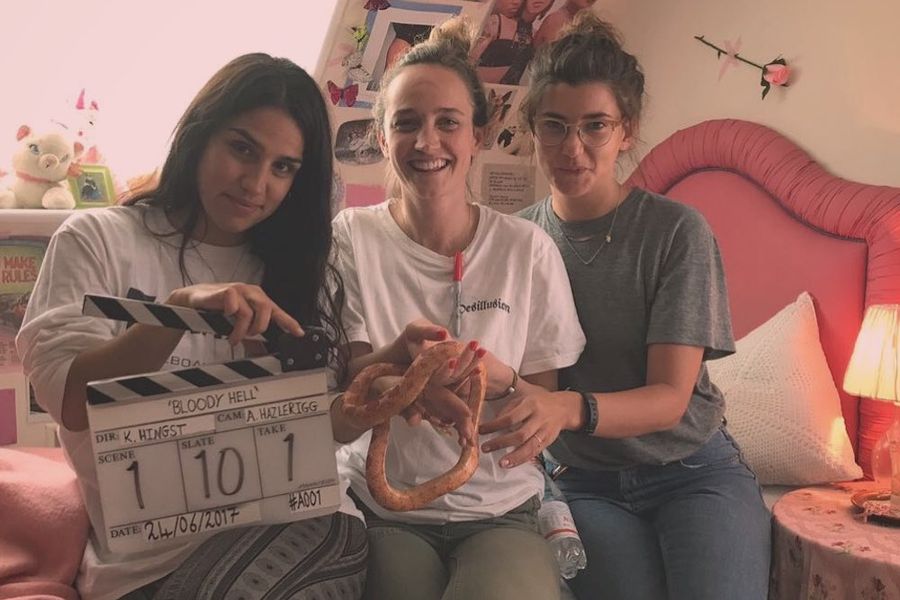
How do organizations like Free The Bid help you?
Before I finally wrote “Bloody Hell” I was in a pretty big pre-life crisis, feeling like I was never going to be good enough to direct and make my own films. Mostly because I didn’t believe in myself and partly because PMS made me doubt my talents every month. During this time, I hid in the cinema a lot to stare at the black screen and envision the credits with my name. One of the films I saw was Love True directed by Alma Har’el, founder of Free The Bid. I was so blown away by the beauty and simplicity of her style and storytelling that I started to look her up and became amazed with her self empowerment and drive to just pick up a camera and make films. No excuses. Just filmmaking. This unapologetic go-getter gave me the kick in the butt I needed to get over myself and just do it.
When “Bloody Hell,” was finally finished, I took a chance and messaged Alma on Instagram, wanting to thank her for what she had unknowingly inspired and also asked for feedback on the film. She replied within days and not only gave feedback but also brought Free The Bid on board to help with the release. To me, Free The Bid is not only an initiative that pushes for more women directors to be put to work; they are almost like a sisterhood that sticks together to back each other up, help bring change to the way women see themselves as artists, and become confident competitors in the industry.
What advice would you give a young woman who wanted to get into film?
In terms of advice, it would be exactly the same as I would give a young man. Go for it. Knock on doors that you might not expect to open. If you know a distant, twice removed cousin who works in props or any other department, send them a message and see if they can help. If you aren’t so lucky to have family ties in the industry, a great way to get experience is helping out local film students; they’re always looking for helping hands, as they usually can’t pay but have really interesting projects and networking opportunities.
Unless you know exactly what you want to do, try out a few different departments to get a rounded view of what it takes to create a film. I would say the AD department is the best to get an idea of the entirety of a film set, as you look after every department as well as the cast. Try any avenue you can and don’t give up if you don’t get in right away. When you do get your first job—say, as a runner—work your ass off! Try to think ahead and be attentive. Get a feel for where you’re needed without having to be asked. This is also the tricky part: being helpful without overstepping. Don’t be afraid to make mistakes, and never forget this is your time to learn. Give yourself a chance to grow and learn the basics before rushing into self fulfillment. Even if you think you’re better than locking off a door or just making coffees, take your job seriously and always do your best. A coffee can get you very far on a film set (especially on a night shoot) and people will thank you for it. I still have my little black book I had as a runner, where I used to write down in detail what my cast would eat and drink, so I would never have to ask twice should I get to work with them again. You never know—one day they might thank you by helping you fund your first film.


What other changes need to be made for female directors to have greater visibility within the industry?
In order for female directors to get more visibility, we need a combination of things to improve. It’s not just the industry that needs to change. As much as I like to imagine “the industry” as an air conditioned fancy meeting room where middle aged, slightly overweight white men swipe left or right on scripts and directors, it’s much more than that. It’s a reflection of society and what the industry thinks society wants. We, the people, need to let them know that TIME’S UP for underdeveloped plots where women are only eye candy that throw in a not-so-bright question here and there for men in the film to spit back tough lines of dialogue nobody believes in 2018.
We need to let them know that we have spent decades following the creative output of male filmmakers, and it’s been great! No, really—I am thankful for those films, and many of those filmmakers are the reason I wanted to become one myself, but as in any good story, we need a plot change from time to time. We are ready for a new narrative, told by the voices of female filmmakers that are so overdue to be heard.
I hope that one day we won’t have to divide filmmakers into male and female categories, but that’s the way it is for now. So I think the pendulum needs to start swinging the other way in favor of women before it settles at a middle ground. The people in charge of money or key decisions, aka movie makers, need to provide female filmmakers with opportunities (not just once but twice or three times) and marketing budgets should focus on promoting those films, in order to put the ladies on the map. This shouldn’t be considered “risky”—people like Patty Jenkins have proved how much money they can make at the box office. It’s not charity, it’s good business.
Again, it might need some getting used to but this really shouldn’t have to be considered difficult! The more we see certain things in everyday life the more we interpret them as normal. It’s a bit like the thing with hairy armpits—in the beginning, we all thought it was weird, so we would comment on it every time we saw a lady that had the audacity to grow her hair out. But now I feel like it has become an accepted choice of styling, and nobody really finds it that interesting to point out anymore.
So maybe more than ever, cinema depends on the audience. They can be the change we so desperately need. When going to the movies, have a look what films are on by female directors, give it a shot and go see that one instead of the usual blockbuster that you already know will end with HIM saving the world anyway. Talk about the film with friends, and get people to spread the word. The more tickets sold for films directed by women, the more attention this “new demand” will get and ring ring . . . maybe if we keep asking for it, the call will be answered and the round table—now filled with equal numbers of women and men of different diverse identities—will start green lighting more films written and directed by women.
